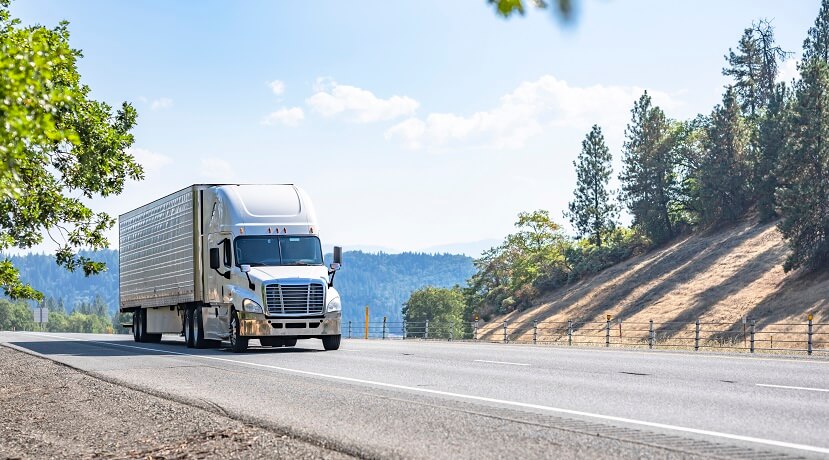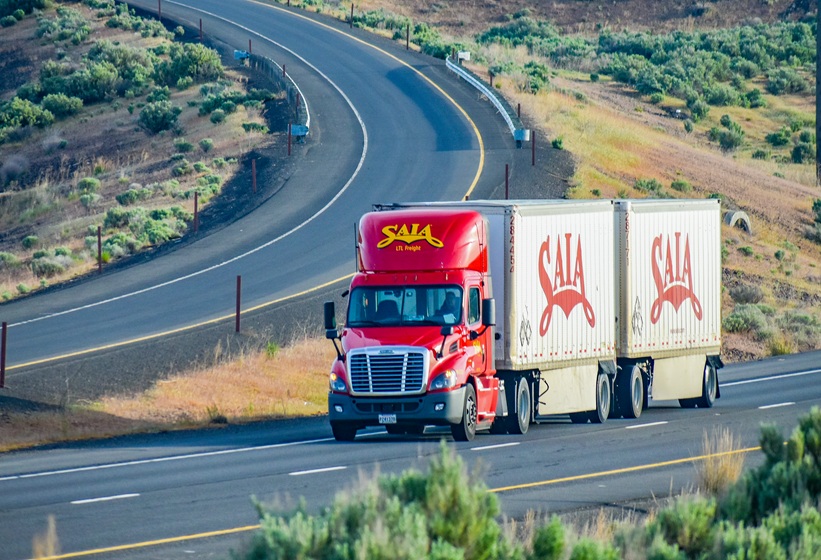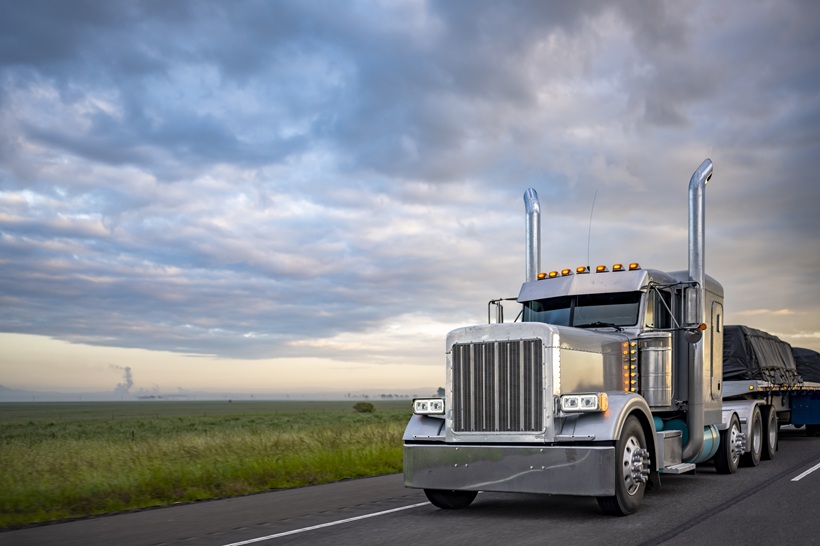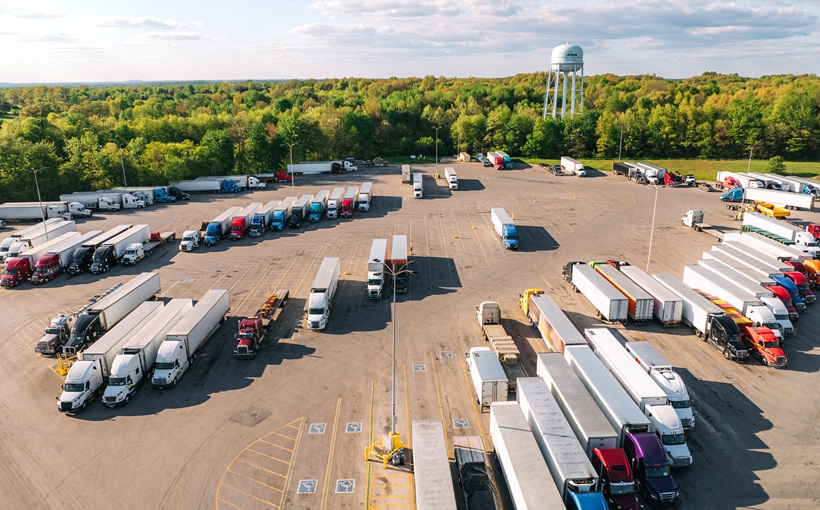
Why Parking is Still Hard to Find for America’s Truck Drivers
If you’ve ever had to hunt for parking at a restaurant, town square, or garage in your daily drive, you know that it can be a maddening experience. And if you’ve ever asked, “What’s the parking situation like there?” it’s because you want to avoid wasting valuable minutes you could otherwise use for work or leisure instead of hunting for a spot.
For many of the nation’s professional drivers, that frustration has, unfortunately, become an inescapable part of making a living on America’s highways.
In the American Transportation Research Institute’s (ATRI) annual study and survey of the top issues impacting the trucking industry, lack of truck parking first appeared in the top 10 list in 2012. Since 2015, truck parking has been in the top five. Last year, it was No. 2 and ranked No. 1 among the drivers consulted for the study.
Unlike the hypothetical presented at the beginning of this piece, this lack of parking spaces for tractor trailers isn’t merely an inconvenience—it’s an income- and productivity-reducing problem. Per the American Trucking Association (ATA), time spent finding parking or cutting drive time short to ensure an available parking space costs the average driver nearly $7,000 per year.
When drivers can’t find parking and are forced to use alternatives like the side of a freeway on ramp, it makes the roads less safe for everyone—and can have tragic consequences. Beyond liability issues for carriers, the stress and challenges drivers face finding parking can lead to driver dissatisfaction and turnover.
Why the parking problem persists
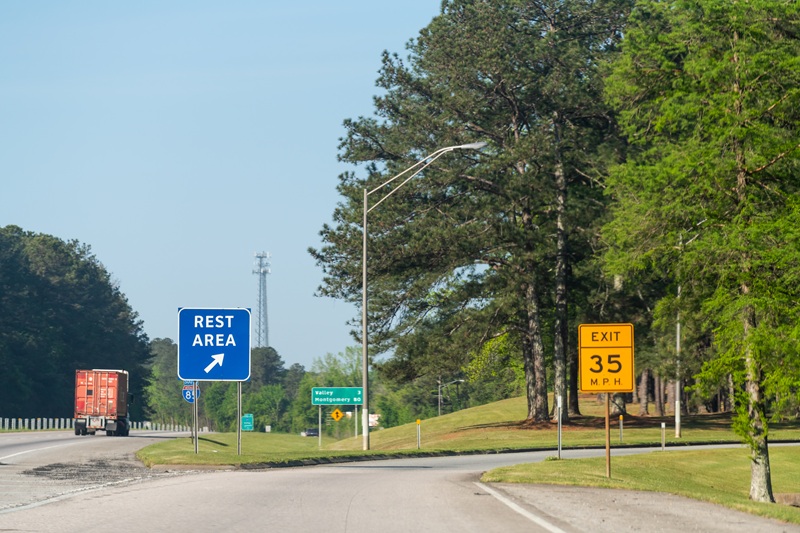
Despite truck parking being recognized as a top concern for over a decade, the problem persists—and in many areas, it’s getting worse. So why isn’t this issue being solved more quickly?
The vast majority of truck parking spaces—approximately 87% according to Federal Highway Administration data from 2020—belong to private truck stops. Of the 313,000 tracked parking spaces nationwide, only 40,000 are found at public rest areas. This imbalance puts tremendous pressure on commercial facilities and leaves many stretches of highway woefully underserved.
Industry experts suggest that ideally, there should be about one public truck parking space for every four private truck stop spaces. However, the reality varies dramatically by region and state.
While some states approach a near 1-to-1 ratio of public to private spaces, others have ratios as extreme as 1-to-40. Vermont, for example, maintains 236 public rest area spaces compared to 354 private spaces—a respectable ratio of about 1-to-1.5. Louisiana, by contrast, has just 280 public spaces against 11,782 private spaces.
When state DOTs were surveyed about the challenges to expanding truck parking, their top concerns were securing funding (36%), community pushback (27%), and finding suitable land (25%).
And building truck parking isn’t just about laying down asphalt—it requires land acquisition, construction, security measures, and often utilities and restroom facilities. With those factors considered, the median cost for a state to construct just one truck parking space is $93,500, according to ATRI research. Even after construction, maintenance costs remain substantial, with the median state budget for operating all its rest areas reaching $5 million.
Possible developments for more parking
Despite these challenges, there are some signs of progress on the horizon.
From 2022 to 2026, nearly $752 million in federal grant funding has been allocated to support truck parking projects through programs like Infrastructure for Rebuilding America, Rebuilding American Infrastructure for Sustainability and Equity, and the Rural Surface Transportation Grant Program. ATRI estimates this funding will result in over 2,000 new truck parking spaces and various infrastructure improvements.
The Truck Parking Safety Improvement Act, which has been reintroduced to Congress, could provide an additional $755 million dedicated specifically to expanding truck parking capacity. This bipartisan legislation, championed by Rep. Mike Bost of Illinois and others, would establish a competitive grant program to fund projects from fiscal years 2025 through 2029.
Eligible projects under the proposed legislation include construction of new rest areas, adding parking spaces adjacent to commercial truck stops or travel plazas, and reopening existing weigh stations, rest areas, or park-and-ride facilities for commercial truck parking.
A recent partnership and report between ATRI and the American Association of State Highway and Transportation Officials (AASHTO)—which included input from all 50 state DOTs—represents another significant effort to quantify the problem and identify practical solutions.
Evaluating emerging solutions for the truck parking shortage
While industry stakeholders generally agree on the need for more parking spaces, there’s less consensus about other potential solutions. One particularly divisive issue is the growing trend of paid parking.
Paid parking: Solution or added burden?
Some market observers herald the rise of private, paid truck parking services as a necessary industry innovation.
However, many drivers and carriers remain skeptical. For an industry already grappling with tight margins, paid parking represents yet another operational cost. When drivers are already losing thousands annually due to time wasted searching for parking, adding parking fees feels like a double penalty.
Additionally, while private ventures may create some new capacity, they don’t necessarily address the strategic placement of parking along major corridors or at the scale needed to significantly impact the national shortage.
Why truck parking-specific apps haven’t caught on
A recent study examining interstates in Iowa and Wisconsin found that, despite severe parking shortages, truck drivers are largely not utilizing parking-specific apps that aim to locate empty spaces.
The study identified two major challenges for app-based truck parking platforms: driver participation (convincing drivers to download yet another app) and compliance (ensuring drivers consistently use the app to check in and check out of parking spaces).
Adding specialized apps for each function creates technological overhead that can be overwhelming, especially during high-stress situations like searching for safe parking at the end of a long day. However, using an integration like Drivewyze in Transflo Mobile+ can help with parking in some regions while also providing benefits like weigh station bypass and critical weather and safety alerts.
Infrastructure, innovation, and integration
The truck parking crisis requires a multifaceted approach—more public infrastructure investment, private sector innovation, and smarter technology solutions. But until those larger changes can be implemented, giving drivers consolidated, driver-friendly tools to navigate the current reality are crucial.
TL;DR
America’s truck parking shortage costs drivers about $7,000 per year in lost productivity and creates safety hazards when they’re forced to park on highway ramps, making it the No. 2 industry concern overall and No. 1 among drivers. The problem persists because 87% of parking is private (truck stops) while only 13% is at public rest areas, with construction costs averaging $93,500 per space and state DOTs facing funding challenges, community pushback, and land acquisition issues. Potential solutions include $752 million in federal grants through 2026 creating new spaces and the proposed Truck Parking Safety Improvement Act adding $755 million more. However, emerging solutions face challenges: paid parking adds costs to tight margins, while parking-specific apps struggle with driver adoption and compliance issues. The crisis requires multifaceted approaches, including more public infrastructure investment, private innovation, and integrated technology solutions like Drivewyze within existing driver apps like Transflo Mobile+ that are more holistic to a driver’s entire day.
